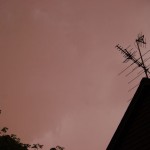Before personal computers were powerful enough to render alternate realities and applications like Photoshop were developed, photographers relied purely on their knowledge of lighting and their camera settings to create the images they desired. Whether glamorous or artistic, it was all in the lighting, exposure, aperture and the sensitivity of their film.
Today's digital cameras give us those options, and then some. So yesterday I set out to do some of my own experimentation to discover how my camera would capture lighting in different environments. My goal was to catch a storm that was heading toward us from across the Great Lakes. Unfortunately the weather forecast was off a bit and the storm didn't get to us at 5PM as they had originally predicted. Regardless, Sarah and I headed to the lake side in Hamburg, NY to conduct some of our lighting experiments.
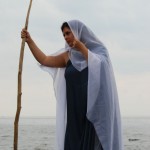
The day presented itself as cloudy with occasional breaks and virtually no wind for being lakeside, which is highly unusual considering the approaching storm. Theatrically, we didn't get anything we wanted! My first try
at the pictures was using my camera with ISO set at 200, f 5.6, shutter speed at 1/80th. I left my white balance set to "cloudy" with no color balance adjustments. Of course working solely from the 2-inch LCD on the camera, fine details are difficult to see, so my adjustments are made in a progression, not simply based on the results. But as you can see, this image is a bit blurred, the haze obscures any background detail and the picture is dim, so on this setting, we're not getting the capture of movement or very good detail lighting.
The next picture I adjusted down to an ISO of 400, increased the shutter speed to 1/200th at an f-5.6.
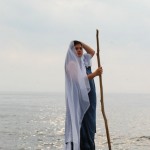
Challenged additionally by the appearance of the sun which tends to change the lighting significantly, but it also gives the opportunity to capture more detail in the background. However, with the f-stop at 5.6, the depth of field is pretty poor as you can see by the results.
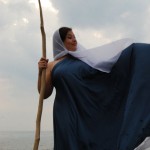
On the next try, I kept the ISO at 400, set the f-stop to 9 and lowered my shutter speed to 1/160th. Here you can see it resulted in a nice balance between the capture of movement and additional depth of field which highlighted the cloudscape well. Unfortunately it does become difficult to balance foreground lighting when the sun is directly behind the subject.
One of the disappointing parts of this was the complete lack of wind. How often is it not windy at the lake? Sarah tried to make the illusion of wind, but as it often does, it turned into some jovial silliness.
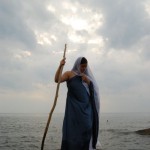
With the storm approaching after nightfall, I didn't care to risk another trip out to the lake. The forecast called for leading edge hail and possibly tornado activity - so I skipped that one, but spent some time on the back deck with my camera and a drink as the storm approached.
Pictures in complete darkness with a focus set to infinity was a relatively new one for me. After a few settings that resulted in nothing but darkness with a couple random light spots, I decided on the settings of ISO400, f-5.6 and a shutter speed with a 4-second exposure. Although my white balance was still set to "cloudy" with no color adjustment, (I don't have a "pitch black" setting - if someone has a recommendation of something they've tried, feel free to comment), the night sky reflected red.
The storm was up high - no lightning was snaking through the clouds or striking outward; it was all above the cloud cover so it was only visible in flashes and through cloud gaps. The results were, however, very interesting.
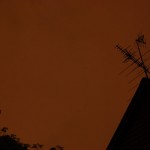
As you can see, the lightning light was enough to illuminate the surrounding landscape and the colors of the house and tree leaves became more apparent, even in the dark.
